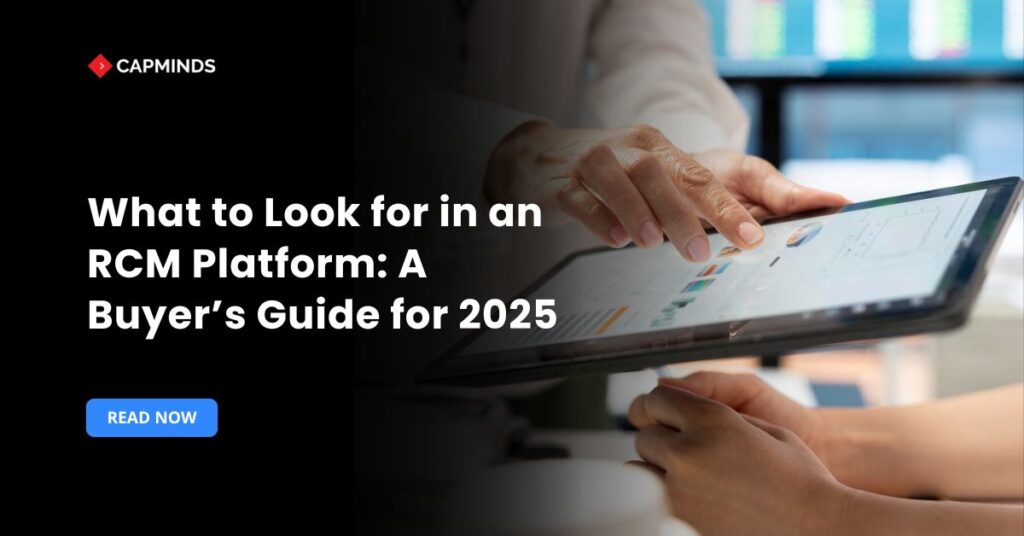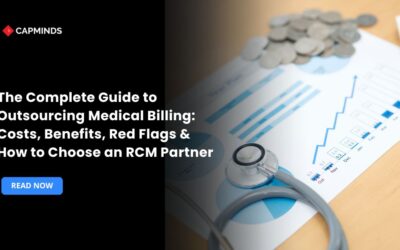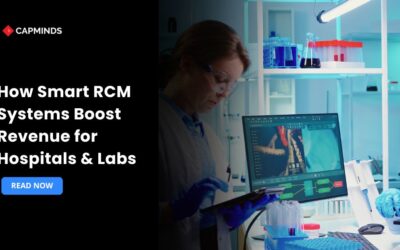What to Look for in an RCM Platform: A Buyer’s Guide for 2025
Healthcare revenue is under more pressure than ever. Hospitals and clinics face narrow margins, rising patient out-of-pocket costs, and complex payer rules. Administrative tasks now swallow roughly 15 % – 25 % of U.S. healthcare spending. The drag on margins is real and growing. Digital revenue-cycle tools are no longer a “nice-to-have.” They now sit at the heart of any serious financial-sustainability plan.
Modern RCM platforms can plug revenue leaks, speed up billing, and lift collections. Yet the vendor landscape feels crowded. Feature lists blur together. Decision-makers quickly reach information overload.
That’s why this 2025 Buyer’s Guide exists. It walks CFOs, CIOs, RCM directors, and practice managers through the noise. You’ll see which functions matter most, what compliance safeguards to demand, and how to size up real ROI. We also flag the integration hurdles that catch many teams off guard.
Finish the guide with a punch-list in hand. You’ll know exactly which RCM traits protect your cash flow today and still fit as your organization scales tomorrow.
The Changing RCM Landscape in 2025
The year 2025 finds healthcare providers at a crossroads of financial pressure and technological opportunity. The global RCM software market is booming (projected to triple from $136 billion in 2023 to over $450 billion by 2034) as organizations invest in tools to enhance revenue performance and ease administrative burdens. Several trends are driving this shift:
1. High Denial Rates
Claim denials remain a major challenge, cutting into revenue. In a 2024 survey, 38% of healthcare organizations reported that over 10% of their claims are denied.
The good news: modern RCM solutions can proactively flag and prevent many denials before they happen, using automation and analytics to address root causes. This marks a transition from reactive denial management to proactive denial prevention as a new standard of care.
2. Razor-Thin Margins
Hospitals are struggling financially; the average hospital operating margin was -13.5% loss in 2022. Every dollar lost to inefficient billing or unpaid claims hurts.
Effective RCM platforms tackle this by streamlining revenue capture, accelerating cash flow, and reducing errors, directly impacting the bottom line.
Related: How to Streamline Patient Claims Management with a Mid‑Size Budget
3. Rising Patient Responsibility
With higher deductibles and the No Surprises Act, patients today pay more out-of-pocket than ever. A transparent, consumer-friendly billing experience isn’t just nice to have; it’s essential for patient satisfaction and collections. Modern RCM systems offer patient cost estimates, self-service payment portals, and flexible payment plans to meet these expectations.
4. Advances in Automation
Automation and AI in revenue-cycle management have moved fast. Early systems relied on basic bots to handle routine clicks. Today’s top-tier platforms go much further. They weave machine learning into every stage of the claim.
The software now spots denial risks before a file leaves your door. It also fine-tunes codes and modifiers to maximize first-pass approval. Staff don’t lose their jobs; they gain breathing room. Algorithms finish the drudge work. Analysts use the fresh bandwidth to chase complex cases and lift collections.
Related: How to Boost Your Practice’s Financial Health with a Revenue Cycle Management Solution
Key Factors to Consider in an RCM Platform
Five decision pillars for any RCM purchase: technology stack, vendor support, automation depth, data intelligence, and security posture. Picking the right platform is all about how those pillars hold up in real life. Capabilities matter. So does the vendor’s track record.
Use the guide below as your scorecard during demos. It flags every must-have for a 2025-ready system, from core functions to compliance safeguards.
1. Comprehensive End-to-End Functionality
Choose a platform that touches the entire revenue cycle. It should drive the patient journey from the first eligibility check to the final payment posting. Top solutions weave patient-access steps, mid-cycle edits, and back-office billing into one seamless flow. This means the software can handle tasks such as:
- Patient scheduling & registration
- Insurance eligibility verification
- Medical coding & charge capture
- Claims submission and tracking
- Denials management and appeals
- Patient billing and collections
End-to-end platforms close the gaps between teams and tools. Data stays inside one ecosystem, so staff no longer shuffle CSV files from scheduling to billing to collections. Visibility improves. Errors shrink.
Picture the flow:
- A patient books an appointment.
- The system runs an eligibility check in the background.
- Coding rules surface at the point of care.
- A clean claim leaves for the payer moments after checkout.
- Payment posts back to the ledger automatically.
Nothing slips through the cracks. The result is faster reimbursement and a smoother financial journey for every patient.
2. Seamless EHR Integration and Interoperability
Your RCM engine must speak the same language as your EHR and practice-management apps. Real-time data exchange, demographics, charges, and clinical notes keep records aligned and eliminate double entry. When the billing layer works hand-in-glove with clinical systems, you gain accurate claims, shorter A/R cycles, and a single source of truth.
That tight fit prevents double entry and keeps clinical and financial data in step. The right choice stays EHR-agnostic and ships with open APIs, so data flows both ways without friction.
Picture this: your front-desk team rekeys patient details from the EHR into billing. Errors creep in. Minutes disappear. A truly integrated RCM pulls demographics, coverage, and charges straight from the chart, instantly and accurately. The payoff shows up fast:
- Lighter admin load: Fewer clicks and fewer “please hold” calls.
- Lower error rates: Clean data at the source means cleaner claims later.
- Quick staff buy-in: One familiar workspace beats juggling multiple logins.
When you size up vendors, press them on real integrations:
- Do they already sync with Epic, Cerner, athenahealth, or your current stack?
- Can the engine link to more than one EHR if different departments use different tools?
- If you change EHRs next year, will their platform follow? Look for HL7 FHIR-ready APIs that adapt without rebuilding every interface.
Smooth interoperability today saves hours. Flexibility tomorrow protects the investment.
3. Automation and AI Capabilities
In 2025, you should expect intelligent automation to be baked into any top-tier RCM platform. Automating routine, repetitive tasks not only cuts labor costs but also improves accuracy.
AI and machine learning take it a step further by handling complex decision-making and predictions that previously fell to senior staff. Here are key automation/AI features to look for:
- Robotic Process Automation
- AI-driven Coding & Charge Capture
- Predictive Analytics for Denials
- Intelligent Workflow Automation
- Continuous Learning
The bottom line is that automation and AI should deliver tangible results: faster processes, fewer errors, and less manual workload for your staff.
When comparing platforms, request any data on outcomes like reduced days in A/R, lower cost-to-collect, or improved staff productivity attributable to their automation features.
For example, one healthcare organization saw its RCM solution’s bots handle 70% of tasks and cut collection costs by 50%, while reducing claim denials by up to 75% after implementing AI-driven automation. Those kinds of improvements highlight why investing in RCM technology with strong AI capabilities can pay off significantly.
4. Robust Analytics and Reporting
An effective RCM platform should do more than transact; it should analyze. Analytics and reporting tools built into the system turn your raw billing data into actionable insights. This is crucial for leadership (CFOs, revenue directors) to monitor performance and pinpoint where to improve. Key things to look for include:
- Real-Time Dashboards
- Standard and Ad Hoc Reports
- Predictive Analytics
- Benchmarking and Variance Analysis
- Accessible Data and Visualization
When evaluating RCM solutions, ask for sample reports and dashboards. A demo of the analytics capabilities will show you if it meets your needs.
Remember, in the revenue cycle, “you can’t improve what you don’t measure.” The platform’s analytics should empower data-driven decision-making, helping you identify bottlenecks and quantify improvements.
Strong reporting also aids in accountability. You can set targets for your RCM team and track progress with transparency. In short, analytics turns your RCM system from a passive tool into an active guide for optimizing financial performance.
5. Patient-Centric Billing and Payment Tools
Today’s patients expect the same convenience in healthcare billing that they experience in online shopping or banking. For any RCM platform under consideration, patient financial experience features should be a top priority.
A system that makes the billing process clear and easy for patients will not only improve satisfaction but also directly boost your collection rates. Look for capabilities such as:
- Upfront Price Estimates
- Online and Mobile Payment Options
- Flexible Payment Plans
- Patient Communication & Support
- Unified Patient View
Focusing on patient experience isn’t just altruistic; it has tangible financial returns. Providers that implement patient-centric RCM tools see higher collection rates and loyalty.
Patients are more likely to pay promptly when they understand their bill and have convenient ways to pay, leading to less bad debt. As one expert noted, improving the patient’s financial journey can “increase patient satisfaction, boost collection rates, and build long-term loyalty”.
6. Compliance, Security, and Data Privacy
Handling sensitive financial and health information comes with heavy responsibility. Any RCM platform must rigorously protect data and comply with healthcare regulations.
In the U.S., this primarily means HIPAA compliance for safeguarding protected health information, as well as compliance with standards like PCI-DSS for payment card security. When vetting vendors, dig into their security and compliance measures:
- HIPAA Compliance Features
- Data Center Security & Location
- PCI-DSS Compliance
- Regulatory Updates
- Security Certifications and Testing
Never compromise on security; a data breach or compliance failure can cost far more than any software investment. For context, the average healthcare data breach costs organizations about $9.7 million (far higher than other industries), and HIPAA violation fines can reach up to $60,000+ per incident.
So, choose an RCM platform with a proven track record of compliance and robust data security measures. It should give you peace of mind that patient financial data is locked down with the same care as clinical data. During the buying process, don’t hesitate to request documentation of the vendor’s security protocols or even a conversation with their security officer if needed.
7. Vendor Support, Training, and Track Record
Beyond the software features, consider the vendor’s partnership approach and expertise. A platform is only as good as the support behind it, especially when your revenue is on the line. Key considerations include:
- Implementation and Training
- Ongoing Support
- Reputation and References
- Continuous Improvement
- Scalability and Flexibility
A good vendor will act like a consultative partner, not just a software supplier. They should help you identify how to optimize your revenue cycle using the tool and be willing to commit to your success.
Also, evaluate the cost model and contract: is it subscription-based, per-claim, percent of collections, etc., and does that align with your financial situation? Make sure there is transparency in pricing and that you’re comfortable with any long-term commitments.
Evaluating ROI and Making the Decision
Ultimately, the goal of implementing an RCM platform is to improve financial outcomes, so keep ROI at the forefront of your evaluation.
Consider both the quantitative ROI and qualitative benefits. Many organizations experience a strong ROI from advanced RCM solutions. Some providers report up to a 25% increase in revenue and greater efficiency due to automation. But to ensure you’re selecting the right solution, start with these steps:
1. Identify Key Metrics
Before implementing any new system, define the key performance indicators you’ll be tracking. Consider goals like:
- Boosting clean claims by X%
- Reducing denials by Y%
- Cutting days in A/R from 60 to 45
- Lowering cost-to-collect by Z%
These goals give clarity on what you aim to achieve and help steer your vendor selection.
2. Ask for Proof Points
During demos or RFPs, request specific case studies or results from vendors. Ask them to show evidence of improvements, whether it’s in denial rates, collection yield, or other important metrics, from clients who are similar to your practice. Solid proof points ensure the solution can deliver on its promises. Credible vendors will have data or references to back up their claims.
For example, ask: “What reduction in denial rate have your hospital clients achieved?” or “Do you have examples of ROI analysis from your platform?” If possible, speak to an existing customer about their experience.
3. Total Cost of Ownership
Look beyond the upfront price. Calculate the total 5-year cost, including software fees, implementation, training, support, and any hardware. Then weigh this against the expected gains.
Cloud RCM software typically ranges from ~$130 to $300 per provider per month, depending on features, but enterprise hospital systems can be much more, sometimes priced as a percentage of collections. Ensure the pricing model aligns with your financial goals and that there are no hidden fees.
4. Pilot and Measure
If feasible, do a pilot or phased rollout and closely monitor the impact. Many providers start with one department or a subset of payers to test the waters. Measure the baseline metrics and then the post-implementation metrics. This data will confirm the ROI and also help fine-tune the configuration.
CapMinds Revenue Cycle Management Solution
Effective revenue cycle management is essential to improve healthcare practices’ financial health. To avoid the drawbacks, minimize claim denials, and improve your revenue cycle management, an expert must be put to use in your practice.
At CapMinds, we are bringing a comprehensive solution to make your billing and coding experience better. Our medical billing team expedites your entire billing process. Utilizing our Revenue Cycle Management Solution, your healthcare practice benefits from:
- 24/7 Support: Always available for your queries.
- Dedicated Client Manager: Personalized service for your practice.
- Efficiency and Accuracy: Streamlined billing, fewer claim denials.
- Financial Optimization: Maximize revenue and correct underpayments efficiently.
- Enhanced Cash Flow: Timely collections and improved financial management.
- Compliance and Security: Adhere to industry standards always.
We optimize your charges, submit your claims, ensure on-time collection, reduce accounts receivable, identify underpayments, and increase your practice’s net collections, thereby better clinical and service expansion. We also have a dedicated client manager who will be exclusively assigned to you.
And the team will be available around the clock to assist with your queries. “Reach out to CapMinds to make your medical billing process easier and more effective.”




